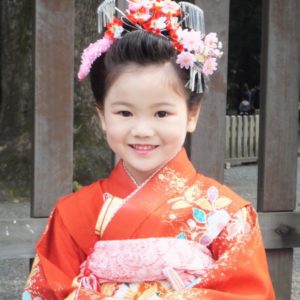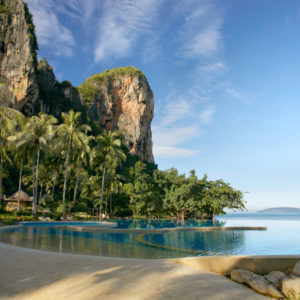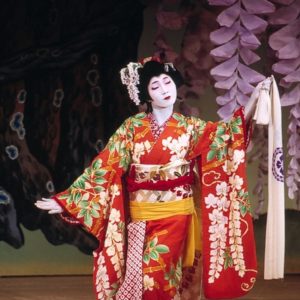Video courtesy of Visit Japan tourism
Japan is an island in the Pacific Ocean with compact cities, imperial palaces, mountainous national parks and thousands of shrines and temples. Each destination in Japan has its own valuable traditions, cultures, and unique features.
Shinkansen bullet trains connect the main islands of Kyushu (with Okinawa’s subtropical beaches), Honshu (home to Tokyo and Hiroshima’s atomic-bomb memorial) and Hokkaido (famous for skiing). Tokyo, the capital, is known for skyscrapers, shopping and pop culture.
Tokyo is the largest city and capital of Japan with its population number one in Japan. It is the center of Japanese politics and economy, and it is also where important national institutions such as the royal palace and Parliament building are located.
Tokyo is a marvelous mix of modern living and old-fashioned manners, slick high-tech gadgets and cutesy cartoon mascots. It’s terribly crowded yet can be strangely quiet. Its home to the understated, and the wacky, and you often find them right next to each other on the sidewalk. That’s the beauty of this not-so-pretty city — that, and the fabulous food and unparalleled mass transit system. There are shrines and stone lanterns and other traces of old Japan scattered among the skyscrapers, swanky shopping malls and hole-in-the-wall noodle shops. The trick is to sample it all, to visit the serene garden and the massive office tower with a sky deck.
Tokyo has the greatest number of train stations in Japan, so traveling by train is very convenient here. For example, getting to popular sightseeing spots such as Sensoji Temple in Asakusa and Ameyokocho in Ueno are both 5 minutes away from Asakusa Station and Ueno Station respectively. Trains are a very convenient transportation method here, but the trains do not run from late night until early in the morning. Tokyo also has the greatest number of Shinkansen trains, long-distance buses and aircraft terminals, thus making it very convenient to travel to other areas from here.
In addition, there are lots of shops and restaurants near the stations. So even if you get off at a station which you have never heard of before, there should be sightseeing spots or shops nearby.
Tokyo is a center for different cultures. Several Japanese events take place in Tokyo and one of the biggest Matsuri Festivals called Kanda Matsuri held at Kanda Myojin, Hanami (flower viewing) in Ueno Park, and Sumida-gawa (Sumida River) Fireworks Festival, etc.
Mt. Fuji is the most famous mountain in Japan. The area surrounding Mt. Fuji is a most attractive tourist route for there are all kinds of sightseeing spots as well as resorts. To climb Mt. Fuji, you will need to plan an overnight visit. If, however, you wish to go on a day trip, we recommend a bus tour that will take you to the Fifth Station of Mt. Fuji and well-known sightseeing spots in the environs such as the Five Lakes of Fuji known as ‘Fuji-go-ko’ and Hakone. In fine weather, you will be able to command a magnificent view of Mt. Fuji.
The highest mountain in Japan, Mt. Fuji is 3,776 meters above sea level, and is located more or less in the center of Japan, stretching over Shizuoka and Yamanashi prefectures. Its elegant conical form has frequently been depicted in many paintings and literary works since ancient times. Many Japanese dream of standing on the summit at least once in their lifetime, and Mt. Fuji is visited by some 300,000 climbers every year. The mountain officially opens only in summer; the climbing season runs from the beginning of July to the end of August. If time permits, why not aim for the summit? From the mountain top, you will command an exquisite view of a field of clouds spreading endlessly into the distance under the indigo sky. In particular, the early morning scene of the sun rising from the sea of clouds is of an inexpressible beauty, and this sunrise is regarded as a deity and worshipped by the Japanese who call it ‘Goraiko’. The sun rising up on New Year’s Day known as ‘Hatsu-hinode’ or ‘the first sunrise of the year’ has a symbolic importance, attracting many tourists to Mt. Fuji.
On the mountain top, there is a mail box, so you can send letters with your impressions upon reaching the summit. Every year, there is an increasing number of foreign hikers coming to Mt. Fuji, and the hiking routes are now marked with signboards in English, Korean and Chinese. Other than the joys of mountain climbing, Mt. Fuji offers the delights of appreciating scenic beauty. There are various tourist spots in the vicinity, where you will be able to fully enjoy the pretty landscapes of each of the four seasons.
Hakone is located in Fuji-Hakone-Izu National Park and is rich in nature. One of the popular tourist destinations is Owakudani Valley which is a valley created by a volcanic eruption approximately 3000 years ago. Visitors can take the Hakone Ropeway to climb to 1044 meters in altitude and can also see the activity of the active volcanic activity. Black eggs which have black shells formed by a chemical reaction to volcanic gas are popular as gifts.
Ashinoko Lake is also representative of nature in Hakone. There are Hakone Sightseeing Cruise as well as the famous Hakone-jinja Shrine which is known as a power spot. During the summer, fireworks are held here as well.
If you want to enjoy a hot spring while in the area, Hakone Yumoto Onsen Hot Spring located in the vicinity of the JR Hakone Yumoto Station is recommended. There is various accommodation in the area ranging from small inns, large resorts and Japanese style Ryokans. Daytrips to the hot springs are also an option. There are gift shops and eateries in the area and visitors can enjoy a stroll while at Hakone Yumoto Onsen.
The closest train station to Hakone is Hakone Yumoto Station and can be accessed from Shinjuku by Odakyu Line. Transportation within Hakone includes busses, Hakone Tozan Train, Hakone Sightseeing Cruise and Hakone Ropeway. If you plan to use all these transportation methods, the purchase of a day-pass is recommended. A 2-day pass from Shinjuku is available and we can arrange.
If you walk the streets, conversation with a good tempo can be heard. This characteristic speech is a dialect of the Kansai area called Kansai dialect (Kansai-ben). Many Japanese people associate Kansai dialect with comedians, and one of the reasons for this is that many comedians in Japan are from the Kansai area. Although it is frequently said that it is tough to make Osakans laugh, on the flip-side it is also very true that their spirit of service is strong. Public performances are usually in Japanese, and people that want to see Japanese comedy should go to the Nanba Grand Kagetsu or Umeda Arts Theater.
Osaka, while having such a unique culture, is also the second largest city in Japan just after Tokyo. Osaka is full of tourist locations, numerous eating and drinking establishments in Umeda, Nanba, and Shinsekai (new-world downtown area), is home to one of Japan’s three lord’s castles called Osaka Castle, and there is also Universal Studios Japan, Osaka Aquarium Kaiyukan, and Tsutenkaku Tower. In addition, Osaka is located nearby Kyoto and Nara, and being only about a 30-50 minute train ride away, this makes the Osaka area perfect for tourism as well.
The closest airports to Osaka are Osaka International Airport and Kansai International Airport. There are many overseas and domestic flights available as well as more than 10 flights a day connecting Osaka to Haneda Airport in Tokyo, just a quick 1 hour and 15 minute flight away. It is also possible to take the Shinkansen train from Shin-Osaka Station to Tokyo, and this trip takes around 2 and a half hours.
There are a lot of historical buildings such as Fushimi-Inari-taisha Shrine’s red Torii, the big stage of Kiyomizu-dera Temple and the Bamboo Street of Arashiyama Mountain. Lots of people visualize Kyoto’s landscape as being the main image of Japan. Other than those structures, traditional art crafts, traditional dances and such things as Japanese cuisine and sweets can be enjoyed here. Kyoto is the best destination for those who want to enjoy the traditional culture of Japan and museums such as the Kyoto Museum of Traditional Crafts or Tondaya Nishijin Textile Lifestyle Gallery.
We recommend visiting during autumn when you can enjoy the autumn leaves view or in summer when the Gion Matsuri festival is held. Recommended autumn leaves viewing spots are such places as Jojakko-ji Temple, Nison-in Temple, and Renge-ji Temple. Gion Matsuri festival is one of the three biggest Matsuri festivals in Japan, and it is a festival that has been held here since 1000 years ago. The whole festival is around one month long, and during that period plenty of different festivals are held everywhere in Kyoto. Additionally, winter in Kyoto is very cold and it snows, so please check the weather in advance and dress accordingly.
You can get around by train or bus in Kyoto City. The southern part of Kyoto City used to be the capital city and nearly all the roads are formed into vertical and horizontal straight lines, thus it is quite easy to get around and remember directions. Also, since Kyoto is adjacent to Osaka, Nara and Shiga prefectures, traveling around the Kinki area from here is very convenient.
It boasts 17 UNESCO World Heritage sites, hundreds of shrines and temples, is home to traditional kaiseki cuisine, has many skilled artisans, and craft stores. Gion is a famous geisha district. In Kyoto, a geisha is called geiko, which translates as “art professional” in reference to their training in traditional dance and music; apprentices are called maiko. While it’s possible to catch a glimpse of both in Gion, you can learn more on an inexpensive walking Gion Night Tour or at Gion Corner with its performances of dance, music, flower arranging and other cultural arts.
Kiyomizu-dera Temple, Kyoto’s most famous temple is an engineering wonder built to withstand earthquakes. It extends over a cliff supported by 18 massive pillars. Founded in 778 to honor Kannon, the Buddhist Goddess of Mercy & Compassion, the World Heritage Site spreads along a wooded slope of Mount Otowa. Its’ famously offers stunning view of spring cherry blossoms, autumn foliage, and the city of Kyoto. The site also hosts Jishu Shrine, dedicated to the god of love and matchmaking.
Nara is deeply connected to Buddhism and Todai-ji Temple, Horyu-ji Temple, and Yakushi-ji Temple have been registered as World Heritage Sites and are famous tourist destinations representative of Nara. There are places where visitors can also learn about the history of Nara such as Nara National Museum where art related to Buddhism is on exhibit, as well as the Nara Prefectural Museum of Folklore / Yamato Folklore Park. The Irie Taikichi Memorial Museum of Photography Nara City features photographs of Nara city and cultural assets such as Buddhist statues, and is a recommended stop.
Along with historical buildings, Nara deer are a symbol of Nara. Nara Park, adjacent to Kasuga-taisha Shrine, which has been designated as an important cultural property of the nation, is inhabited by approximately 1,500 wild deer (as of 2015). Snacks for the deer are sold within the park and allows visitors to come in close contact with the deer.
Nara Station is the central train station to each of the tourist destinations. There are tourist spots which are in walking distance to Nara Station and others which must be accessed via train. From other major cities, use a train or plane to arrive in Nara. From Kyoto and Osaka, it is 50 minutes by train to Nara. From Kansai International Airport or Osaka International Airport, visitors can use a bus to arrive in Nara, which takes 1 ~ 1.5 hours.
The must-have food items in Hiroshima City are okonomiyaki, oyster cuisine, and sake. To the east of Hiroshima City is Higashihiroshima City which is home to the region of Saijo, famous throughout Japan for sake production. At the “Sakagura-dori” you can stroll through an elegant townscape where many old cellars are gathered. In the southeastern part of Hiroshima is Kure City, a city which formerly served as a naval base. As such, Kure is home to the “Yamato Museum”, a museum which holds numerous items related to Japan’s navy, such as a 1/10 replica of the battleship Yamato.
The airport nearest Hiroshima City is Hiroshima Airport; it has flights connecting to Tokyo, Sapporo, Sendai, and Okinawa. From the airport we can arrange a limousine bus to get you to JR Hiroshima Station, so even if you lack a car you can move about the Hiroshima area. The Shinkansen also runs to Hiroshima Station; it’s about a 4-hour ride from Tokyo Station.
The Rainy Season – Rainy days and cloudy days increase as the rain front becomes active from early June to early July in Honshu and from mid-May to mid-June in Okinawa. The rain may continue to pour over a period of several days so travelers during this season should plan ahead. Please be careful of hazards such as mold and food poisoning that often result from the high levels of humidity. Hokkaido is mostly unaffected by the rainy season.
Typhoons – Cyclones over the Pacific Ocean intensify and sometimes pass near Japan from July to October. Statistics show that they move onshore the most between August and September. Typhoons cannot be prepared for appropriately as their tracks and the damage they inflict greatly differ each time they hit, but please gather necessary information when they start to approach. Public transportation may even come to a halt when they are large in scale. In most cases, they cause serious effects for two days.
Winter (December – February) – The temperature rarely drops below 0°C in the plains along the Pacific coast during wintertime. It is also quite dry and very often sunny. Central Japan and Northern Japan are highly reputed regions for winter sports. Southern Japan is comparatively mild and pleasant in winter. Clothing: overcoats, sweaters, etc.
Spring (March – May) – The plum blossom is a good sign that the cold winter will soon end and spring is just around the corner, followed by the cherry blossom at its best in the Tokyo area between the end of March and the beginning of April to bring this beautiful season to a climax. Splendid views of mountains, fields and gardens all blanketed in gentle pink abound in this season. Clothing: light jackets, light sweaters and other similar kinds of tops.
Summer (June – August) – The Japanese summer begins in June with a three to four week rainy season. This is an important time for farmers to plant rice. It becomes seriously hot and humid from July onward and many Japanese enjoy bathing in the sea and relaxing at cool resorts in mountainous areas. Summer is when many interesting festivals and other events are held all over the country.
Clothing: light clothes (cardigans and other similar kinds are handy, since indoors are mostly air-conditioned.)
Autumn (September – November) – Autumn always brings such freshness with a light breeze and cool temperature after the hot and humid summer. All forests are dyed in glorious autumn colors. Chrysanthemums create beautiful displays with their abundance of flowers to enchant visitors to parks and gardens. Autumn is also the season for many exhibitions, music concerts and sports tournaments in Japan. Clothing: light jackets, light sweaters and other similar kinds of tops.
Showing all 3 results
-

 Asia & India, China, India, Japan, South East Asia
Asia & India, China, India, Japan, South East AsiaHistoric & Iconic Hotels, Luxury Island Retreats, Exotic Beachfront Villas & Design Boutique Hotels
Read moreNeed Assistance?
800-227-5317 | sales@pacific-destinations.com
Tell us where and when you want to go and we’ll give your request our immediate attention! No high pressure sales, just straight talk and sound advice!

